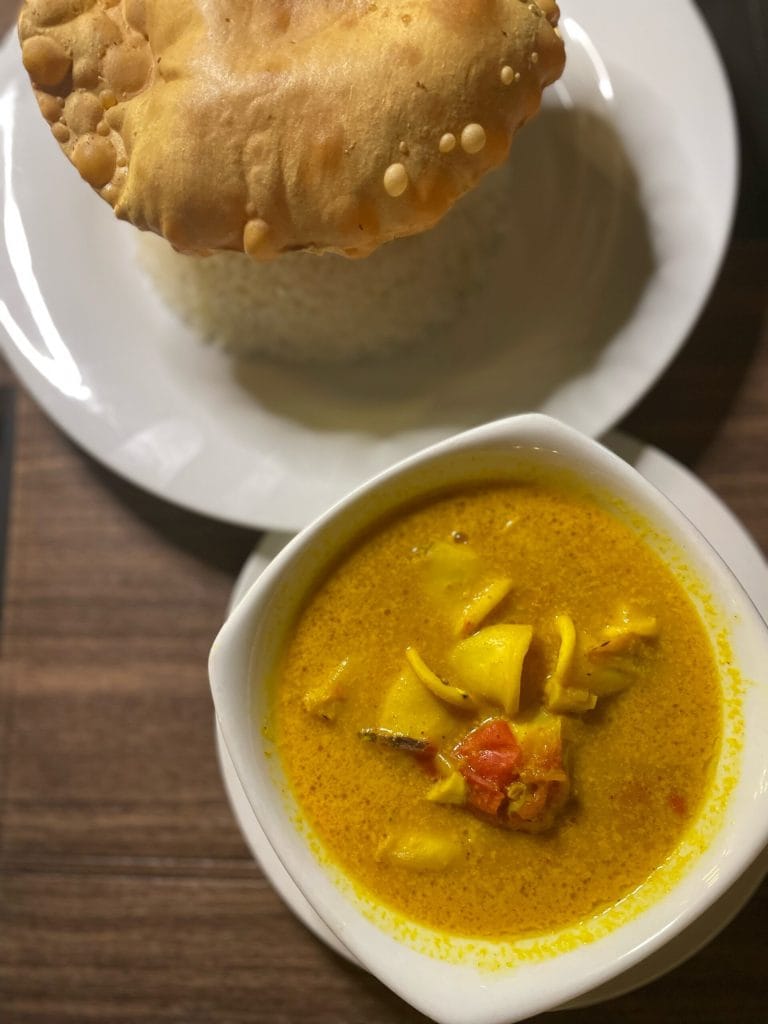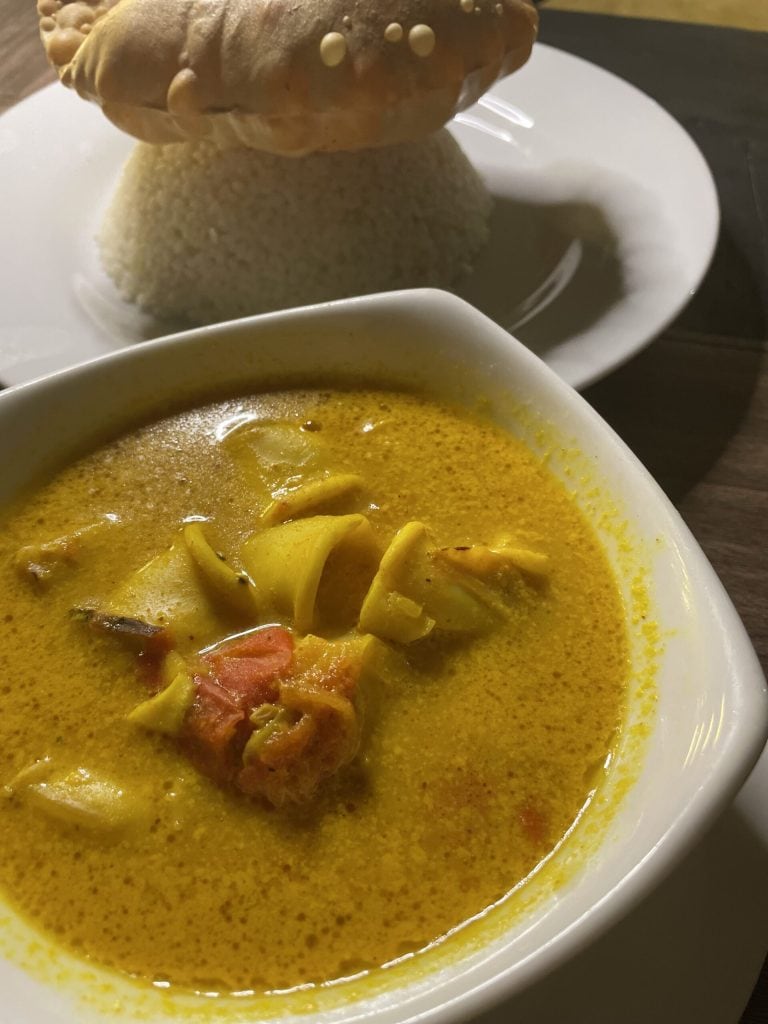Dallo Curry (දැල්ලෝ කරිය) or “cuttlefish/squid curry” is a curry made with cuttlefish or squid, featured in Sri Lankan cuisine.
• The Sinhalese term “දැල්ලෝ” (dallō) is used to refer to cuttlefish or squid.
• The recipe includes typical Sri Lankan ingredients: coconut milk, curry leaves, onion, spices like chili, turmeric, black pepper.
👉 The cuttlefish curry is a variant of Mirisata, the spicy fish or seafood curry, prepared with cuttlefish or squid cut into rings.
It is slightly softer and more aromatic than the classic fish version, yet equally spicy.
This is what we tasted at the Sapphire Seas Beachfront, our resort in Hikkaduwa during our trip in October 2025, like the

- Difficulty: Easy
- Cost: Medium
- Preparation time: 5 Minutes
- Portions: 2 People
- Cooking methods: Boiling
- Cuisine: Sinhalese
- Seasonality: All Seasons
Ingredients
- 1.1 lbs cuttlefish (cleaned and cut into rings or pieces)
- 2 tablespoons coconut oil
- 1 onion
- 2 cloves garlic (crushed)
- to taste fresh ginger (grated)
- to taste curry leaves
- 1 teaspoon fennel seeds
- 1 tablespoon curry powder
- to taste black pepper
- 1 teaspoon chili pepper
- 1/2 cube turmeric powder
- 3/4 cup coconut milk
- 1 tablespoon lime juice (or tamarind)
- to taste salt
Steps
Heat the coconut oil in a large pan or pot.
Add onion, garlic, ginger, and curry leaves. Sauté until the onion is golden.
Add the fennel seeds and dry spices: curry powder, turmeric, black pepper, and chili pepper. Cook for 1-2 minutes to release the aromas.
Add the cuttlefish and mix well with the spices.
Pour in the coconut milk and bring to a boil.
Add salt and lime or tamarind.Let it simmer on medium-low heat for about 20-25 minutes, until the cuttlefish is tender and the curry thickens.
Serve hot with white rice, roti, string hoppers, or papadum (as in the photo)

FAQ (Questions and Answers)
Why do Indians and Sri Lankans bathe in the sea with clothes on?
In India and Sri Lanka, people often bathe in the sea (or in sacred rivers) with clothes on for cultural and religious reasons.
For women, it is linked to modesty: they wear saris or traditional clothing to cover their bodies, even in water, avoiding Western swimsuits that reveal too much.
For men, it is similar, with dhotis or light pants.
In ritual contexts, like the Kumbh Mela, the purifying bath is done clothed to maintain sanctity and customs. It is a matter of respect for Hindu social and religious norms, where body exposure is uncommon in public.
The practice of bathing clothed is more about cultural and modesty norms than religion itself. In Buddhism, there is no explicit prohibition, but society values privacy: women avoid skimpy costumes out of respect for local traditions and to avoid unwanted attention, especially in public or mixed areas.
It’s an everyday thing, influenced by both Hindu and colonial legacies, and not just ritual.

